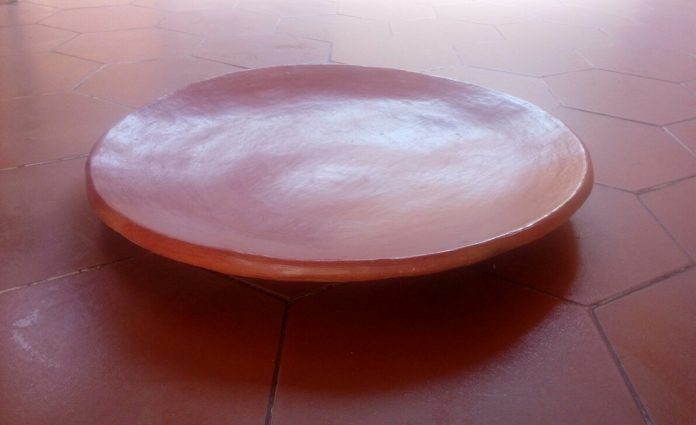Farmers and Fishermen masters of ceramics.If we study the history of mankind from early times on, one thing is evident: its numbers are increasing all the time! May this increase be quick during the last centuries or decades; the situation in prehistory was not different – albeit the growth was slower then. The answer mankind has found for problems caused by its increasing number is: organization.
In this specific case organization of the plant world by selection and cross-breeding, created an opportunity which in other situation never could have sustained the mention growth. In this way the nutritive value of plants improved: they became domesticated. When large numbers of the improved plants were planted together on a relatively small piece of land organized agriculture became possible and the need to be constant on the hunt diminished drastically. The Amerindians has provided many plants with a high nutritive value to mankind:these where specially potatoes, maize,cassava, peanuts, many species of beans, tomatoes, cacao, vanilla etc.
For the area under study maize and manioc have a primary importance. Cassava was domesticated at an early date in Central Amazonia. Early domesticates of maize have been found in Peru and in Mexico from ca 4000 BC on.
Amerindians groups in East Venezuela cultivated cassava from ca 2000 BC on. In the same period of time maize was cultivated in West Venezuela. Aruba followed West Venezuelan trends and developments.
The general development to provide the main part of the diet in an “organized” way resulted in larger villages and more permanent village locations, heavier-built houses, etc. Under such conditions- and we see this all over the world- people start to store liquids and to process food in more elaborates way than in “hunter-gatherer” communities: as soon as the use of domesticated plants (agriculture) starts, the use of pottery or ceramics develops (hence Ceramic Period). These developments are present in Venezuela for a long time without affecting Aruba.
Ca 9000 – 1000 AD, however, Amerindians with such technologies came to Aruba and founded large villages. All these villages are situated on good soil for the gardens in which the food plants were cultivated. In a relatively dry Island such as Aruba that is near the best locations from a geomorphological (‘soil’) and hydrological (‘water’) point of view: near the guts or ‘rooien’.
We call these Ceramic Indians., after the specific style of their pottery. Such pottery was excavated first by archaeologists near Dabajuro, a town near Coro on the Venezuelan mainland.It is handsome, well-made pottery as can be seen in the exposition of the Archaeological Museum Aruba.
Not all the pottery that were excavated by Archeologists at the large villages (three are most important: Santa Cruz and Tanki Flip at some distance from the southwest coast, and Savaneta near that coast) were as well-finished as some of the specimens that have a place of honor in this Aruba’s archaeological museum. Well-finished and decorated ceramic artifacts where in most of the time elaborated for ceremonial use,and this was in gratitude to the spirits that had been generous with the people. So that more than 90 % of the excavated ceramic work was undecorated ‘utility-ware’: vessels to store liquids, cooking pottery and griddles. This last category is formed by large, ca 2 cm thick flat circular plates of ceramic, budare or buren used to prepare cakes of cassava and maize.
The Aruban pan batí or beaten bread in Papiamento is derived for this kind of cooking method. We must mention that this way of cooking corn or maize flat bread on a clay plate is common all over the American continent. For example the name budare comes from Arawakan- Caquietian language. The buren which forms the word Burenquen the native name of Puerto Rico, stands for many buren or many cooking plates indicating the abundance of food and the comal of Mexico, which is use to roast the famous tortilla. Nowadays clay comal or Budare`s has been replaced by cast iron griddles that in Aruba is called the casuela. However clay budare`s always has given that special native taste to this simple but nutritious cake or flat bread.Another preparation hich is made of grinded corn kernels corn is our funchi, which can be compared to what is known as polenta or corn cake in Italian cooking.
Source; Island Insight column by Etnia Nativa.




















